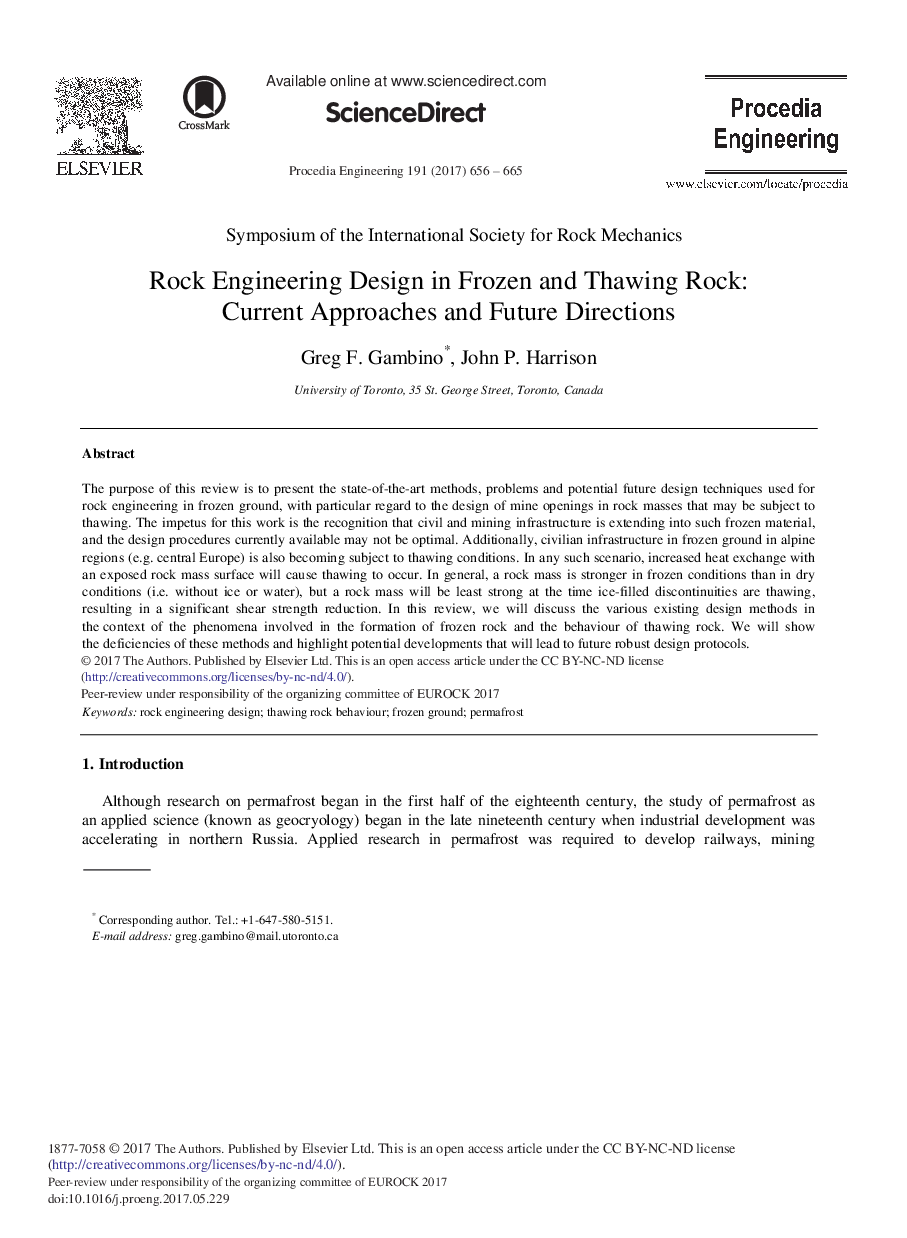| Article ID | Journal | Published Year | Pages | File Type |
|---|---|---|---|---|
| 5027556 | Procedia Engineering | 2017 | 10 Pages |
The purpose of this review is to present the state-of-the-art methods, problems and potential future design techniques used for rock engineering in frozen ground, with particular regard to the design of mine openings in rock masses that may be subject to thawing. The impetus for this work is the recognition that civil and mining infrastructure is extending into such frozen material, and the design procedures currently available may not be optimal. Additionally, civilian infrastructure in frozen ground in alpine regions (e.g. central Europe) is also becoming subject to thawing conditions. In any such scenario, increased heat exchange with an exposed rock mass surface will cause thawing to occur. In general, a rock mass is stronger in frozen conditions than in dry conditions (i.e. without ice or water), but a rock mass will be least strong at the time ice-filled discontinuities are thawing, resulting in a significant shear strength reduction. In this review, we will discuss the various existing design methods in the context of the phenomena involved in the formation of frozen rock and the behaviour of thawing rock. We will show the deficiencies of these methods and highlight potential developments that will lead to future robust design protocols.
